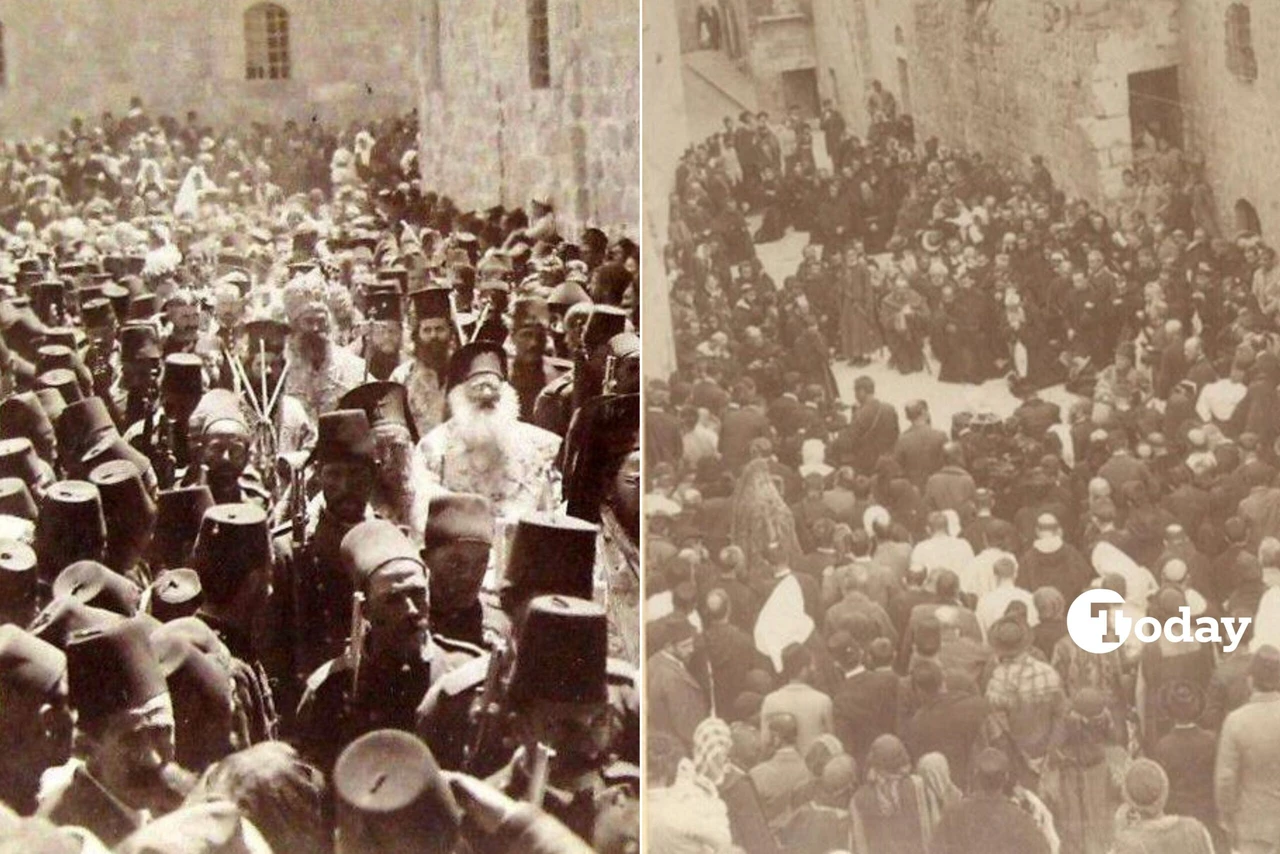Queen of the Danube: Budapest
 Statue of Prince Arpad in Heroes' Square, in Budapest, Hungary, June 10, 2024. (Koray Erdogan/TürkiyeToday)
Statue of Prince Arpad in Heroes' Square, in Budapest, Hungary, June 10, 2024. (Koray Erdogan/TürkiyeToday)
Every landscape offers a great photo opportunity,
The cultural capital of Central Europe,
The Queen of the Danube,
Uniquely beautiful, day and night,
A city of bridges like a necklace of pearls,
The Paris of the East,
The capital of thermal waters,
A mix of different cultures,
The birthplace of world-renowned scientists, composers, and writers,
The capital of historic cafés,
A place for romantic walks, and much more.
Here is Budapest…
A place to visit and explore…
Hungary, although landlocked, shares borders with Slovakia to the north, Ukraine to the northeast, Serbia (especially the Vojvodina region) to the south, Romania and Croatia to the east, Austria to the west, and Slovenia to the southwest.
Budapest, known as the Paris of the East, is the bustling and multicultural capital of Hungary. From art to cuisine, festivals to Christmas markets, and much more, Budapest is a vibrant city.
The best part is that it’s very accessible, with an international airport and rail connections to the rest of Europe. From Istanbul, the world’s meeting point, it’s just a 2-hour flight away.
Budapest is a wonderful city that has modernized without compromising its history. Its days and nights are uniquely beautiful, making it essential to experience both the morning and evening versions of its sights. You’ll enjoy seeing the daytime spots illuminated during a night boat tour on the Danube.
The name “Budapest” comes from the two sides of the river: the western side, “Buda,” and the eastern side, “Pest.”
Walking is one of the easiest ways to explore Budapest, and the city offers this in abundance.
You can divide your exploration into two parts: Buda for historical sites like the Royal Palace, Old Town, Fisherman’s Bastion, Matthias Church, Gellert Hill, and the recently restored tomb of Gul Baba, a symbol of Turkish-Hungarian friendship where Ottoman Sultan Suleiman I, known as the Magnificent, once attended the funeral.
After a short break on Margaret Island in the Danube, cross over to Pest to visit the museums along Andrassy Avenue (“utca” means “street” in Hungarian), Heroes’ Square, City Park, the Opera House, the world’s third-largest Parliament, and buy souvenirs from the city market while watching the sunset over the bridges along the Danube. Visiting Budapest and wandering through this city steeped in history is a joy in itself. You’ll oscillate between historical scenes, sometimes lost in a poem or feeling the brushstrokes of a painter, because this is Budapest.
While getting lost in the streets of Budapest, you can see a mix of architectural styles such as Roman, Gothic, Ottoman, Baroque, and Art Nouveau. If you love photography, Budapest is perfect for you—almost every point is picture-perfect.
Besides the beauty of its streets, Hungarians are generally kind and welcoming people.
Therefore, Budapest will embrace you with its streets and people. If you’re considering a Budapest tour, you can either book a guided tour through a travel agency or prepare thoroughly with research and planning before your trip.
Though Hungary is an EU member, it uses its own currency: the Hungarian Forint (HUF) instead of the euro. In Budapest, Hungary’s most famous city, the Hungarian Forint is used. €1 = 411 Hungarian Forints.
While Euros are accepted in tourist spots, you may receive your change in Forints. It’s advisable to exchange a portion of your money into Forints, which can be done after passing passport control at the airport. Credit cards are widely accepted and can be used safely.
Compared to other European cities, Hungary—especially Budapest—is more affordable due to its own currency, making it suitable not only for individual travelers but also for conferences, meetings, dealer trips, events, and organizations.
Moreover, Budapest offers accommodations, restaurants, and nightlife for every budget, just waiting for your travel plans.
Here, I should mention the Hungarian tourism agency “Visit Hungary” and the “Budapest Convention Bureau,” which are actively promoting Hungary and bringing more conferences, events, meetings, organizations, and tourists to explore Hungary, especially Budapest.
Since Hungary is part of the EU, entry is with a Schengen Visa. A common critique in Hungarian visa applications this year has been the increased rejection rates and the issuance of short-term visas. Unfortunately, the rejection rate for applications from Türkiye is around 19-20%.
However, thanks to collaborative efforts with the Turkish Travel Agencies Association (TURSAB), tour operators, and agencies working in the region, the number of Turkish visitors — currently on the rise — will likely increase even more due to streamlined visa processes.
Weather in Budapest:
Winters are cold, and summers can be very hot. The best time to visit the city is in the spring, though the Christmas season is also lively and colorful.
You can easily reach Budapest by plane from Türkiye or by train or bus from other European cities. For flights from Istanbul, you can fly directly from Sabiha Gokcen with Pegasus or from Istanbul Airport with Turkish Airlines.
‘Must visit’ destinations in Budapest:
Don’t leave Budapest without visiting the third-largest Parliament in the world (after those in Romania and Argentina), without taking a guided tour in one of the six languages offered daily from 3:00 PM to 4:00 PM at the Hungarian State Opera House (which boasts the third-best acoustics in the world, after La Scala in Milan and the Paris Opera House), without trying Goulash made with beef, onion, and red pepper, and without having dessert and coffee at the New York Café (opened in 1894).
- Chain Bridge (Szechenyi Chain Bridge)
- Buda Castle and its surroundings
- Shoes on the Danube
- Veli Bej Bath/Széchenyi Thermal Bath
- Széchenyi Thermal Bath
- Jewish Quarter & Dohány Street Synagogue
- Budapest City Park (Varosliget)
- Matthias Church
- Heroes’ Square
- Margaret Island
- Fisherman’s Bastion
- Opera House
- Museum of Fine Arts
- House of Music
- Parliament Building
- Gul Baba Tomb
- St. Stephen’s Basilica
Now, let’s talk about Budapest nights, whereby you might begin saying, “Central European nights are the best”:
Ruin Bars have become an integral part of Budapest’s nightlife. What are Ruin Bars?
Ruin Bars are places where abandoned, dilapidated buildings have been transformed into bars, cafes, and entertainment venues with unique styles. These bars constitute a significant part of the city’s nightlife and are famous not only in Budapest but worldwide.
These bars are so renowned across Europe that tours are organized specifically to visit them. Many of these Ruin Bars are located in the old Jewish Quarter. These places, calm during the day, become lively at night.
What to buy from Budapest:
Wooden toys, porcelain, national dolls, Hungarian wine, cheese, Hungarian salami, paprika, magnets, mugs, and more are among some of the souvenirs you can buy.
Budapest isn’t a shopping city like Paris, London, or New York, but the most famous streets for shopping are:
- Andrassy Ut: The most famous shopping street, home to luxury brands.
- Váci Street: Known for shops selling souvenirs.
- Paloma: A street with shopping and cute little cafes.
Türkiye & Hungary
Both Türkiye and Hungary are members of the Western world and NATO, yet express reservations about Western and NATO decisions and tendencies.
Both Türkiye and Hungary reluctantly support or do not support the embargoes and sanctions against Russia.
Hungarian Foreign Minister Péter Szijjártó’s press conference statement that “only Türkiye and Hungary genuinely want peace among NATO members” has been noted as a criticism of NATO.
Hungary sees Türkiye as a bridge to the East, reaching Middle Eastern and Central Asian countries. Türkiye aims to maintain its positions within the EU through Hungary.
This cooperation within NATO also highlights a new emphasis on the strategic partnership.
Farewell with camaraderie.



